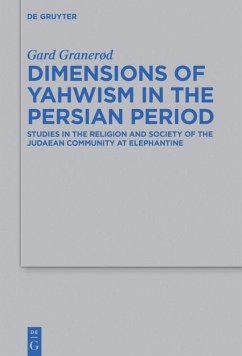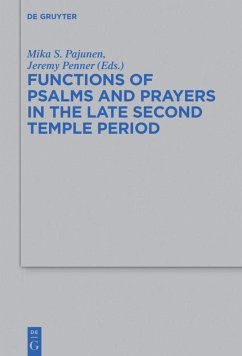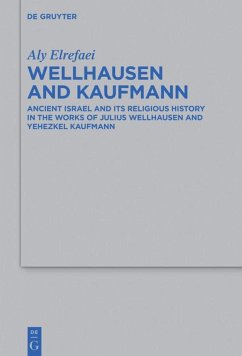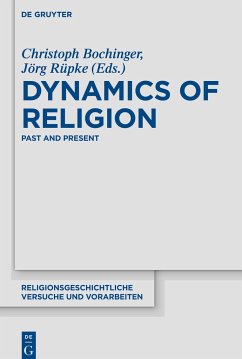
Dimensions of Yahwism in the Persian Period
Studies in the Religion and Society of the Judaean Community at Elephantine
Versandkostenfrei!
Versandfertig in 6-10 Tagen
102,99 €
inkl. MwSt.
Weitere Ausgaben:

PAYBACK Punkte
51 °P sammeln!
What was Judaean religion in the Persian period like? Is it necessary to use the Bible to give an answer to the question? Among other things the study argues that- the religion practiced in the 5th c. BCE Elephantine community and which is reflected in the so-called Elephantine documents represent a well-attested manifestation of lived Persian period Yahwism,- as religio-historical sources, the Elephantine documents reveal more about the actual religious practice of the Elephantine Judaeans than what the highly edited and canonised texts of the Bible reveal about the religious practice of the ...
What was Judaean religion in the Persian period like? Is it necessary to use the Bible to give an answer to the question? Among other things the study argues that
- the religion practiced in the 5th c. BCE Elephantine community and which is reflected in the so-called Elephantine documents represent a well-attested manifestation of lived Persian period Yahwism,
- as religio-historical sources, the Elephantine documents reveal more about the actual religious practice of the Elephantine Judaeans than what the highly edited and canonised texts of the Bible reveal about the religious practice of the contemporary Yahwistic coreligionists in Judah, and
- the image of the Elephantine Judaism emerging from the Elephantine documents can revise the canonised image of Judaean religion in the Persian period (cf. A. Assmann).
The Elephantine Yahwism should not be interpreted within a framework dependent upon theological, conceptual and spatial concepts alien to it, such as biblical ones. The study proposes an alternative framework by approaching the Elephantine documents on the basis of N. Smart's multidimensional model of religion. Elephantine should not be exotified but brought to the very centre of any discussion of the history of Judaism.
- the religion practiced in the 5th c. BCE Elephantine community and which is reflected in the so-called Elephantine documents represent a well-attested manifestation of lived Persian period Yahwism,
- as religio-historical sources, the Elephantine documents reveal more about the actual religious practice of the Elephantine Judaeans than what the highly edited and canonised texts of the Bible reveal about the religious practice of the contemporary Yahwistic coreligionists in Judah, and
- the image of the Elephantine Judaism emerging from the Elephantine documents can revise the canonised image of Judaean religion in the Persian period (cf. A. Assmann).
The Elephantine Yahwism should not be interpreted within a framework dependent upon theological, conceptual and spatial concepts alien to it, such as biblical ones. The study proposes an alternative framework by approaching the Elephantine documents on the basis of N. Smart's multidimensional model of religion. Elephantine should not be exotified but brought to the very centre of any discussion of the history of Judaism.













